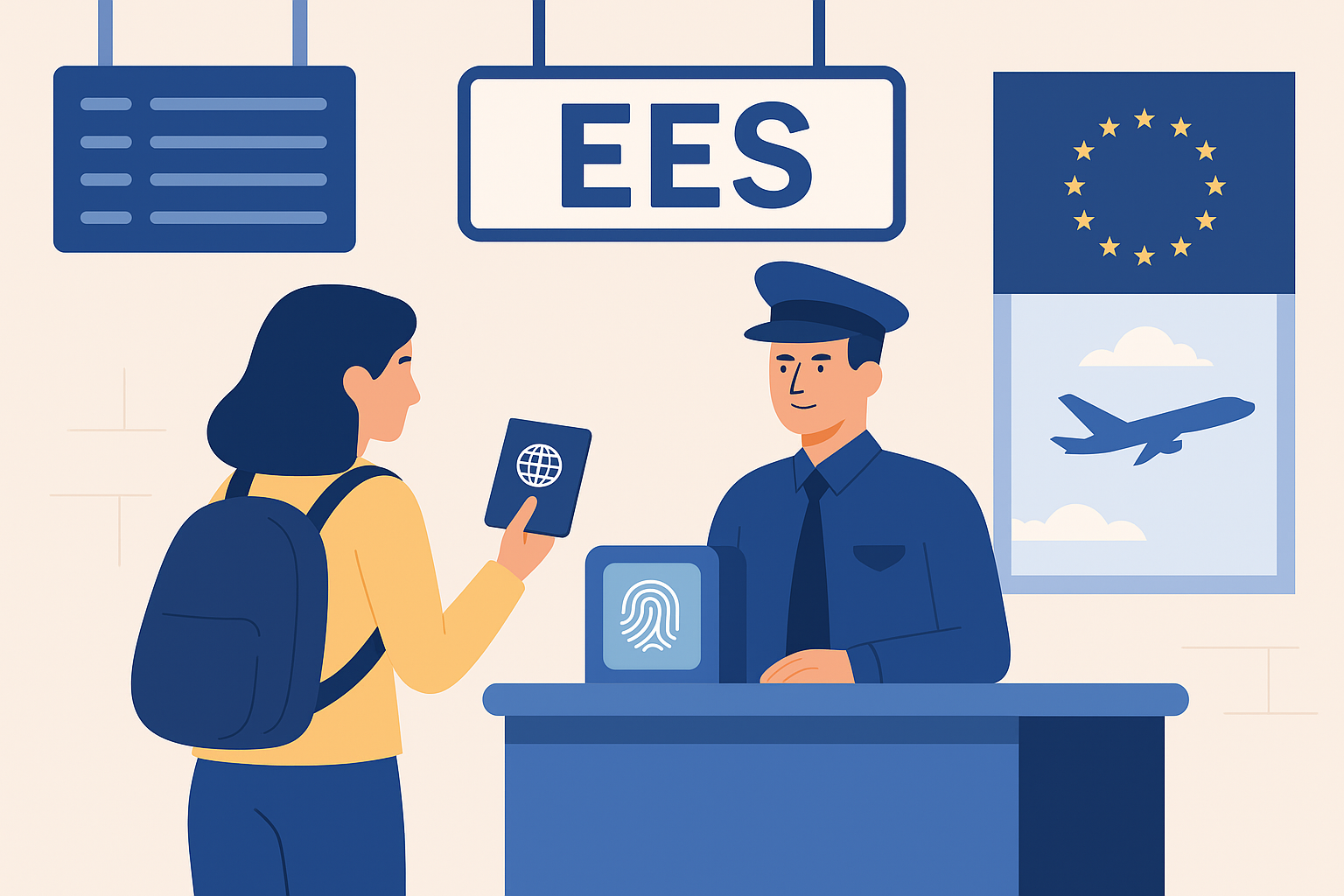What Is the Entry/Exit System (EES)?
The Entry/Exit System (EES) is a new automated IT system introduced by the European Union to modernize the way border checks are carried out for travelers from non-EU countries. It will replace the traditional manual stamping of passports when entering or leaving the Schengen Area. The EES will electronically record the date, time, and place of entry and exit, along with biometric data such as fingerprints and facial images. Its main purpose is to enhance security, prevent irregular immigration, and streamline the border crossing process.

Why the Entry/Exit System (EES) Matters
The EES improves both efficiency and security at the borders. For travelers, it reduces waiting times by automating checks, while for authorities, it helps identify overstay cases and strengthens law enforcement. Key benefits include:
-
Faster and more accurate border checks
-
Better detection of travelers exceeding their authorized stay
-
Enhanced security against identity fraud
-
Reduced need for manual passport stamping
Who Will Be Affected by the Entry/Exit System (EES)?
The EES will apply to all non-EU citizens, both short-stay visa holders and visa-exempt travelers, entering the Schengen Area for stays of up to 90 days within a 180-day period. EU citizens and long-term residents will not be affected.
How the Entry/Exit System (EES) Works
Upon entering or leaving the Schengen Area, travelers’ passports will be scanned, and biometric data will be collected at automated kiosks or counters. The system will store:
-
First and last name
-
Travel document type and number
-
Date and time of entry or exit
-
Biometric identifiers (facial image and fingerprints)
This data will remain in the system for three years or longer in the case of overstays.
Countries Using the Entry/Exit System (EES)
The EES will be implemented across all Schengen Area member states, including:
- Austria
- Belgium
- Croatia
- Czechia
- Denmark
- Estonia
- Finland
- France
- Germany
- Greece
- Hungary
- Iceland
- Italy
- Latvia
- Liechtenstein
- Lithuania
- Luxembourg
- Malta
- Netherlands
- Norway
- Poland
- Portugal
- Slovakia
- Slovenia
- Spain
- Sweden
- Switzerland.
When Will the Entry/Exit System (EES) Start?
The EES is expected to be operational in 2025, although travelers are encouraged to monitor updates from the European Commission and their respective border authorities for the official launch date.

How to Prepare for the Entry/Exit System (EES)
Travelers should ensure their passports are valid and machine-readable, be ready to provide biometric data, and familiarize themselves with automated border control kiosks. For a smoother experience:
-
Keep your travel documents easily accessible
-
Follow instructions from border officers or kiosk prompts
-
Arrive earlier than usual during initial implementation months
Conclusion: The Future of Border Management in Europe
The Entry/Exit System (EES) represents a significant step toward modernizing border management in the EU. By replacing manual stamps with a secure, automated, and efficient system, it will make traveling smoother while strengthening Europe’s security framework. Understanding how the EES works and preparing in advance will help travelers adapt seamlessly to the new rules.
Read more on our website or our Facebook fanpage for more insights!









